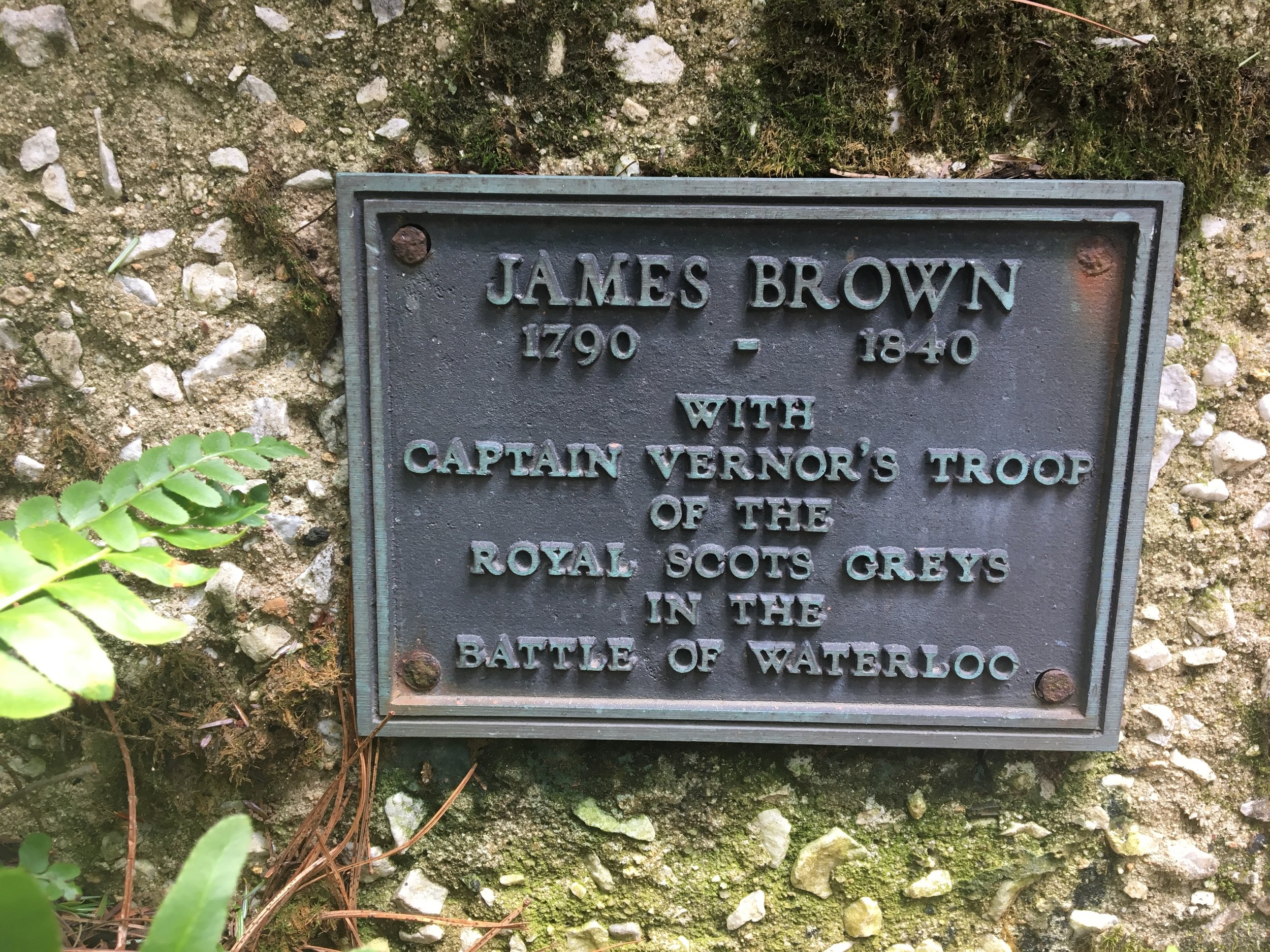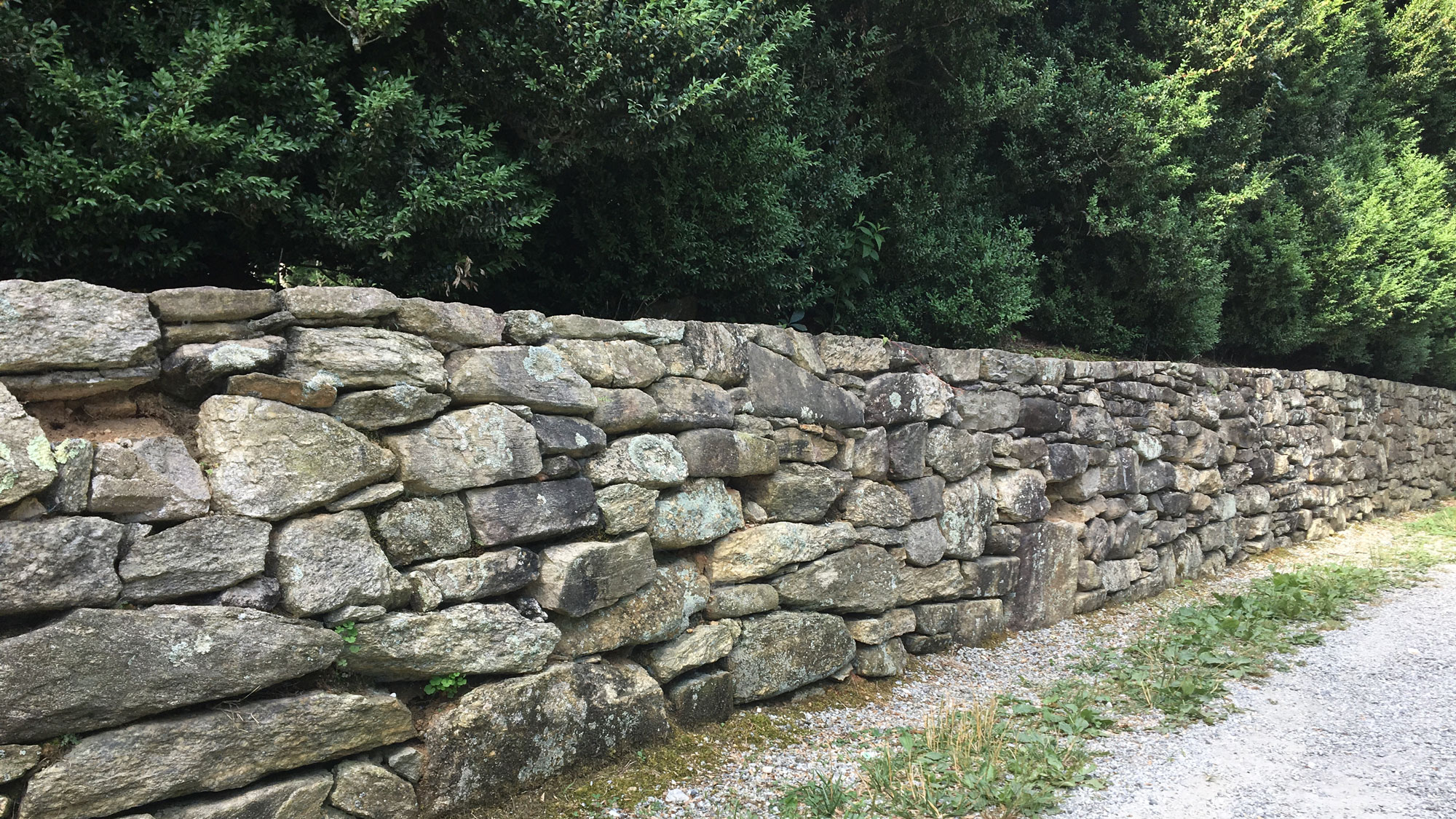Connecting Flat Rock, the Battle of Waterloo, and Moonshine Whisky.
/Albert Gooch, Docent at St john in the wilderness, stands next to the gravesite of James brown.
On a Sunday morning in June of 1815, Scotsman James Brown found himself staring across the countryside of Waterloo, Belgium. A bugler for the Scots Greys, Brown clutched his instrument and prepared to enter battle against the famous French army of Napoleon Bonaparte.
Brown’s role was to convey his commander’s orders to the troops via the notes he played on his instrument. As the cannons reported across the countryside, British and Prussia soldiers clashed with their French counterparts. The fighting was fierce and always conducted at close range - often hand-to-hand combat.
After a full day of attacks and counter-attacks by both sides, the French army was routed and the Napoleonic Wars were finished. Wellington went on to a life and legacy of glory as the victorious general who finally vanquished Napoleon. Napoleon was exiled to the island of Elba. And James Brown, witness to perhaps the most iconic battle in European history, immigrated to America. Ultimately ending up in Flat Rock, NC.
Brown was employed by Charles Baring who lived in Charleston and served as a representative for the Baring Brothers banking family in England. Baring’s wife, Susan, found the Charleston summers oppressive and they built Mountain Lodge, one of the first two homes built in the summer colony of Flat Rock. Brown came to Flat Rock with the Barings and spent his summers working for them at Mountain Lodge.
Brown worked for the Barings until his death in 1840 and was buried at St. John in the Wilderness - a church the Barings built to serve as their spiritual home during summers in Flat Rock. His grave was covered with a brick masonry structure that was then topped with a marble slab. This structure still exists and is directly adjacent to the historic church.
Eventually, Brown’s body was disinterred and returned by his family to his ancestral home in Scotland. But the brick edifice above his former grave remained - and went on to be the source of many interesting stories.
Albert Gooch, Head Docent at St John in the Wilderness and past President of the Kanuga Conference Center, shared one version of the legend of James Brown’s grave:
“Despite the fact that James Brown’s body had been disinterred, the church kept the brick edifice that had covered his gravesite. Later, during the era of prohibition, local moonshiners decided that is would be a great place to distribute their wares. They would take orders and come to the church in the dark of night. They would raise the marble top on the old grave and leave the moonshine in the empty space below. Then they would retire to a discreet distance and wait for their customers to pick up their purchase and leave payment in the gravesite. This went on for a long, long time until prohibition finally ended in this country.”
After prohibition, Brown’s grave served a more frivolous purpose. At Halloween, children of the church discovered that they could lift the marble slab, crouch down in the empty space below, and when they heard someone approach, they would lift the slab and scare the unsuspecting passersby. This practice ended, however, when the marble top eventually cracked and an iron fence was build around the gravesite.
Today, Brown’s gravesite is adorned with a Union Jack flag that is always displayed to honor the memory of the man who fought at Waterloo and went on to live in Flat Rock, NC.







